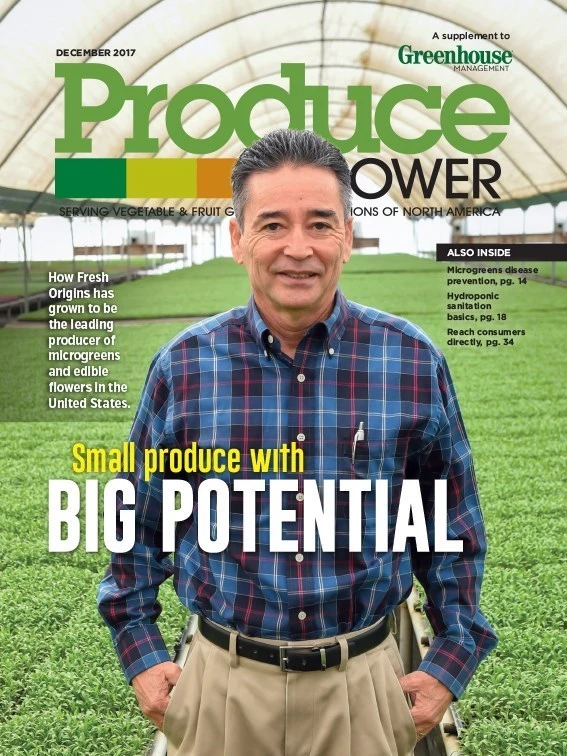
From the question of whether to add insect exclusion rooms or invest in a gutter connected greenhouse, growers have plenty of decisions to make about their structures. Bill Mathis, sales manager at Atlas Manufacturing, breaks it down.
Produce Grower: What are some new developments in greenhouse structures that are conducive to growing produce?
Bill Mathis: Increased size of insect exclusion rooms on ends to make usable space while increasing area of screen, which lessens the restriction of air flow. The demand for taller structures is also increasing to better accommodate vining crops and vertical grow operations.
PG: Is one type of greenhouse structure preferable to another with regard to geography, crop type, etc.?
BM: Geographic location and crop type play a huge role in determining which structure is right for the project. Snow and wind loads have to be accounted for as well as the weight of any equipment or crop that will be supported by the greenhouse frame. A tomato plant may have 10 to 12 pounds of fruit at a given time. If you multiply that by 1,100 plants in a 35-foot by 120-foot greenhouse, you can have over 13,000 pounds of tomatoes that need to be supported. If you live in an area that gets a decent amount of snow, you may have 20 to 30 pounds per square foot of weight on the roof that also needs to be factored into the equation. Because of this we recommend a crop support system that is independent of the greenhouse frame.
PG: How can working with specific bench accessories such as continuous benches, portable benches or rolling benches be of use to growers?
BM: Benches are not normally used in hydroponic greenhouse vegetable production. If growing vegetable transplants, however, there is a need for some sort of bench or T-Rail system to support the seedling trays. A T-Rail system offers a lower cost method of doing this when compared with a traditional greenhouse bench system.
PG: How can growers benefit from shade curtains?
BM: Shade/energy curtains are necessary for controlling temperature, light intensity and also heat retention during winter. There is a tremendous number of climate screen options to help create the specific environment needed. Each crop and geographic location has its own needs and challenges. In addition to shading, today’s screen options can offer light diffusion, heat retention, solar reflection, color spectrum altering, etc.
PG: When does a gutter connect structure become more economically feasible than managing multiple high tunnels and/or free-standing greenhouses?
BM: A gutter connected structure may cost more than a free-standing structure because they are generally taller and often require more structural strength to be able to withstand the weight of snow, ice and rain that accumulates in the gutters. The cost of the gutters alone can add up to a pretty significant amount. The advantage of gutter connected structures, however, is that because of the larger air mass, consistent temperatures are easier to maintain. Gutter connected structures also allow more efficient use of equipment, such as environmental controllers, plumbing and fertigation equipment and material handling equipment. For the small or beginning grower, a free-standing greenhouse is often a good choice because of the lower initial investment required and also ease of installation. — Interviewed by Patrick Williams
Get curated news on YOUR industry.
Enter your email to receive our newsletters.
Explore the December 2017 Issue
Check out more from this issue and find your next story to read.
Latest from Produce Grower
- The Growth Industry Episode 3: Across the Pond with Neville Stein
- PG CEA HERB Part 2: Analyzing basil nutrient disorders
- University of Evansville launches 'We Grow Aces!' to tackle food insecurity with anu, eko Solutions
- LettUs Grow, KG Systems partner on Advanced Aeroponics technology
- Find out what's in FMI's Power of Produce 2025 report
- The Growth Industry Episode 2: Emily Showalter on how Willoway Nurseries transformed its business
- 80 Acres Farms expands to Georgia, Texas and Colorado
- How BrightFarms quadrupled capacity in six months






